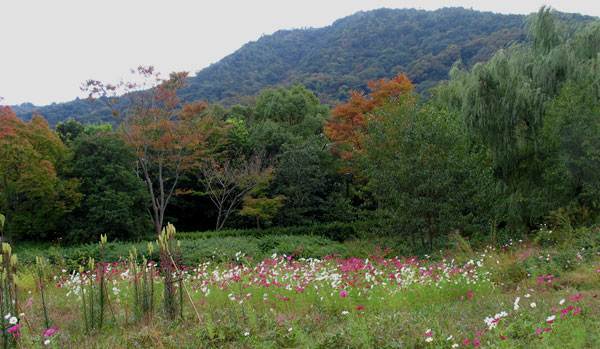November 01, 2005
Kirei
"Kirei" is an untranslatable word that means "beautiful", "simple", "fair", "pure", "plain" or "clean". This is the best word to describe most of things in Japan.
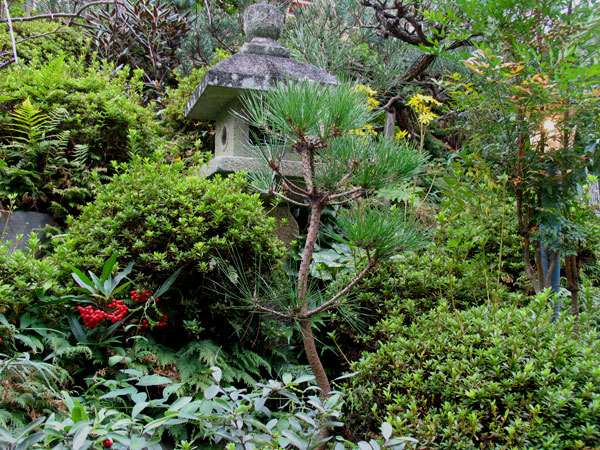
I heard a lot about Kyoto, especially about the temples and shrines, relaxed pace and beautiful walks. My expectations were quite high, but the gardens in Kyoto really blew my mind.. How can anyone be so sensitive and particular in designing their environment? - I don't understand. How much time these people need to spend maintaining their gardens? How do you even start one?
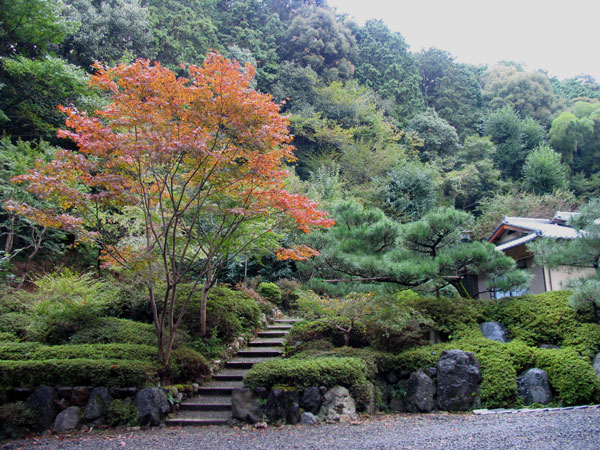
These were not even temples, just gardens of normal people in Kyoto (probably very rich people, but still!!)

And the smell of autumn again - persimmon trees, smell of the earth and rotting leaves...
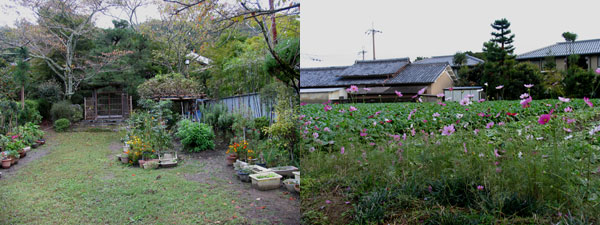
It seemed that people still grow their vegetables and rice. I couldn't understand how anyone could sustain so small farms and tiny rice fields. My colleagues say that the small Japanese farmers do quite well. Consumers are very particular about where their food comes from and they are ready to pay for the quality (1kg rice may cost about 25sgd). Home grown pears, not imported from China, seaweed from the home shore, rice from your neighbour's field.. For me, everything looked very romantic, kind of "old school". You probably noticed that quite often I long for the better olden times, naive as I am.. :)
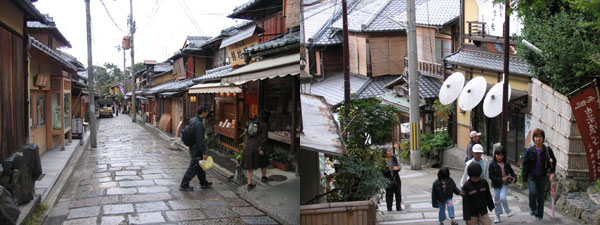
However, after Kawaguchiko Kyoto seemed to be very "cultured" and crowded. A lot of Japanese tourists (mostly elderly!) everywhere, school children having day trips to the nearby temples, etc. At times it felt too "set up" - all the cute small streets lined up with souvenir shops, tea houses with pretty gardens, a bit like Tallinn, I have to say.. ;)
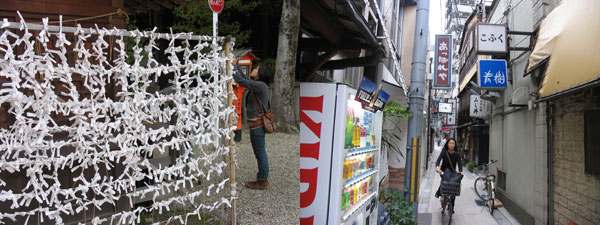
The modern part of Kyoto was still very nice - narrow streets and very humane proportions of everything. I think it must be because of the earthquakes that they can't build very tall buildings (although government buildings in Tokyo are overwhelming!). Even if modern architecture is nothing to rave about (generally), when you walk down the street, you still get the happy/cozy feeling. I don't know why, but I guess that its because the size of the buildings is very manageable. The cities are built for humans, not for cars. If you ask me, this is what makes a city great. This is where Leijonakaupunki should look for the x-factor and everything..
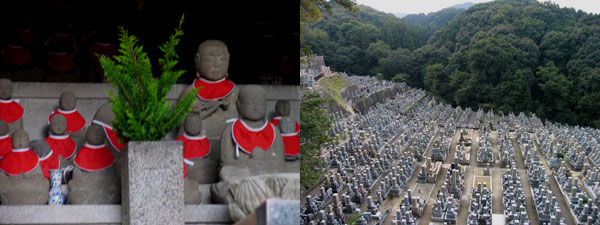
This was the first Japanese cemetary that I saw. You can gather where the modern Japanese architecture is drawing its inspiration, don't you?.. ;)
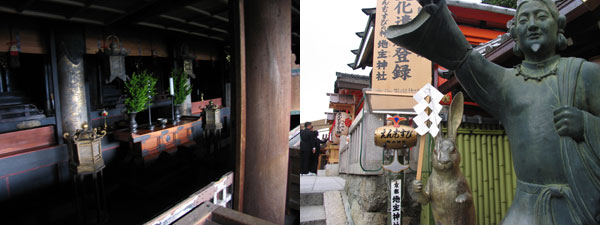
In Kiyomizu-dera, one of the temples in Kyoto (btw there's a shinto shrine inside a buddhist temple, isn't that true religious tolerance for you?!), I learnt that rabbits are actually the messangers from moon (and in this temple, apparently messangers of love too). The rabbit lives in the moon (you can see rabbit's face on the moon) and makes mochi (chewy rice balls).

There are also 2 rocks set some 18m apart in Kiyomizu-dera. You're supposed to walk with your eyes closed from one to another and if you stumble upon the rock, you'll find true love in your life. I was very amused by all the school groups blindly "looking for love" (girl and boy groups separately, of course!!). You should have seen what kind of delight would errrupt once they hit and almost fall over the rock! The whole group would start jumping out of joy!
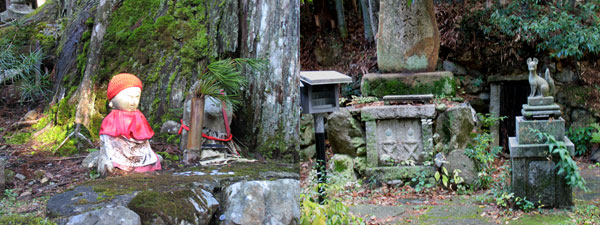
Other important shinto spirits are foxes that are the messangers of the god Inari (any connection with Finland?). Foxes are able to transform themselves into the shapes of human (racoons can do that too).
Kitsune, or fox, grow in power as they age. After a century, they grow a tail and gain the ability to shape-shift and possess people. The most powerful foxes are those who reach the grand old age of 1,000 (the so-called nine-tailed fox). When a kitsune gains nine tails, its fur becomes silver, white, or gold, and it gains the power of infinite vision.Kitsune are renowned tricksters. In many Japanese folk tales, the kitsune appears in the form of a bewitching woman who seduces and tricks unworthy men or rewards and protects deserving people. In human disguise, the she-fox can breed with a man. Fox folk can also cast illusions, appear in dreams, and read thoughts.
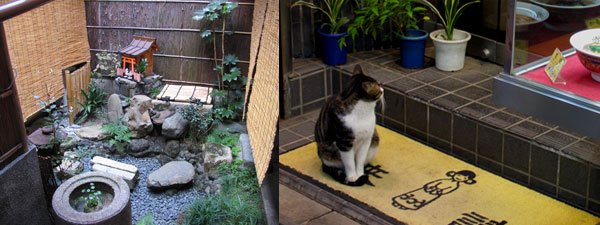
And, of course, the humble cat has great powers in Japan. Cats are lucky. They're fat and they're everywhere in Japan.
The rule for today:
Touch my tail, I shred your hand.
New rule tomorrow.
--
Unknown
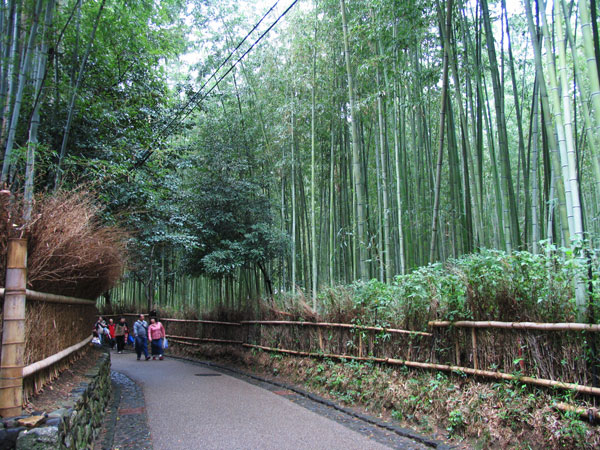
Towards the end I slightly overdosed on temples, but this bamboo forest was still exceptionally amazing. There's plenty of places in Japan where you'd just want to stay, watch quietly completely stunned by the beauty..
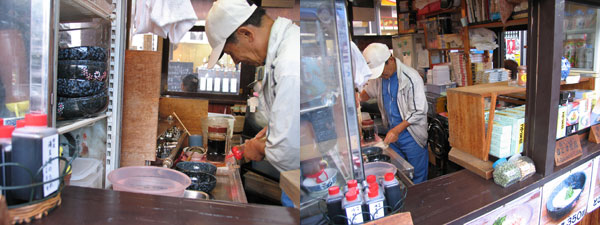
You'll come across many small kiosk-like shops, where you can get your simple meal of tofu.. At some point in trip you just start breathing differently. Everything is so "kirei"!!!
